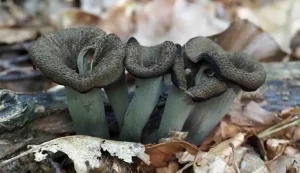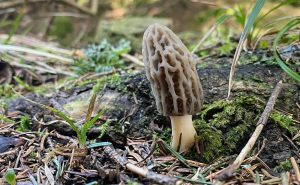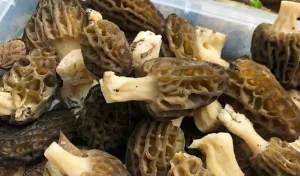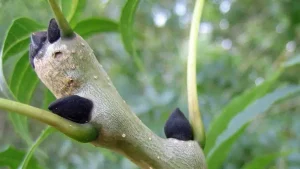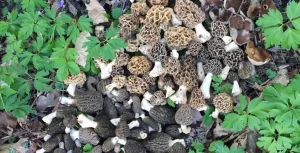Hedgehog mushrooms stand out for their unique spines, making them an intriguing find for foragers.
They grow in mixed woodlands and are distinguishable from their few look-alikes by their distinct features.
These mushrooms are a culinary favorite, known for their versatility in recipes.

Hedgehog Mushroom Look-Alikes
While foraging for hedgehog mushrooms, it’s essential to distinguish them from their look-alikes to ensure safety. Common look-alikes include the false hedgehog, toothed jelly fungus, and black tooth fungus.
These species resemble hedgehog mushrooms but have distinct differences in texture, color, and spore print. Educate yourself on these differences and always exercise caution while foraging.
Where to Find Hedgehog Mushrooms
Hedgehog mushrooms thrive in mixed woodlands, forming rings or arcs around host trees. They favor coniferous and hardwood forests, including spruce, birch, beech, and oak trees.
Found across Britain, Ireland, Canada, Australia, Northern Asia, Europe, and North America.
Growing and Harvest Seasons
They are mycorrhizal, forming symbiotic relationships with trees, which makes them challenging to cultivate at home.
However, you can find them in nature from mid-summer through late winter, depending on your geographic location.
Seasons vary from Australia’s winter to Britain’s late summer and early winter, offering a broad window for foraging adventures.
Identification and Types
Identifying them is straightforward, thanks to their distinctive spines or teeth underneath the cap.
These mushrooms have a convex to flat cap ranging from pale beige to orange-brown. The stem is usually short, stout, and matches the cap’s color.
Besides the common hedgehog mushroom, several other edible varieties exist, including the depressed hedgehog, terracotta hedgehog, white hedgehog, and giant or spreading hedgehog.
Culinary Uses and Storage
These mushroom are highly regarded for their delicate flavor and versatile culinary uses. They can be sautéed, roasted, or incorporated into soups and sauces, pairing well with ingredients like bacon, onions, garlic, and herbs. When storing, hedgehog mushrooms have a long shelf life and can be kept in the fridge for two to three weeks, maintaining their freshness and flavor.
Summary
In summary, these mushrooms offer a delightful foraging experience for both beginners and seasoned mushroom hunters.
By learning to identify these mushrooms and their look-alikes, foragers can safely enjoy the unique flavors and nutritional benefits these fungi offer.
Whether you’re exploring local woodlands or experimenting with new recipes, hedgehog mushrooms are a fascinating addition to any forager’s basket.
